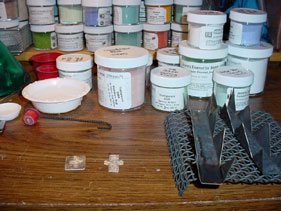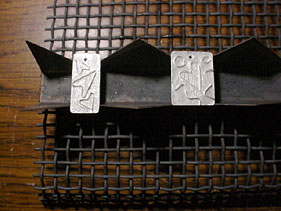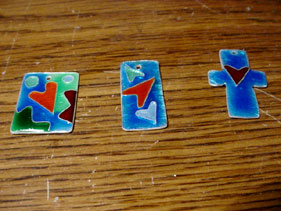Step 2
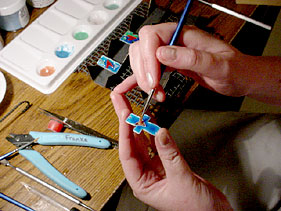
The powdered enamel glass is mixed with water so that the enamel may be "wet packed" into each cloisonne cell using a fine paintbrush. These thin layers of "wet packed" enamel must dry completely each time before they are fired in the kiln at temperatures ranging between 1450 and 1550 degrees. Approximately 4 - 6 layers of colorful transparent glass enamel are built up over the transparent base coat of enamel.
|
Step 3
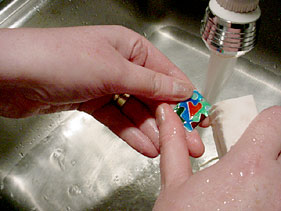
Once the piece has been fired so many times that the glass meets the height of the cloissone wires, the piece is grinded down with an alumdum stone to ensure that the cloisonne wires are flush with the glass. This also makes the cloissone wires more pronounced and removes small impurities from the piece. The piece is then fired one last time to a glossy finish.
|

